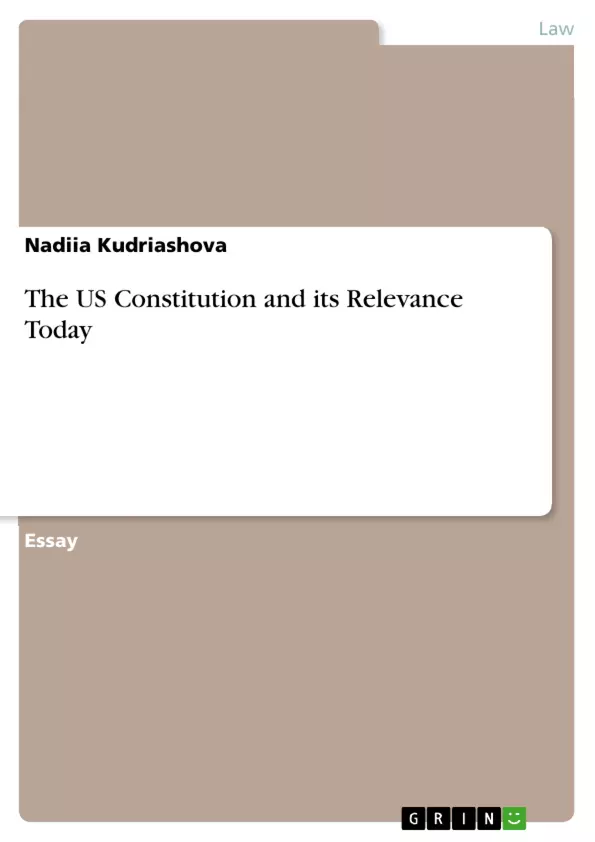This essay discusses the US Constitution and its relevance today and asks whether the constitution meets the requirements of the contemporary world. It argues that the value of the US Constitution is ambiguous for different periods in the history of this country. For the first time it had a historically progressive character as contributed to the development of new relations of production. Its influence on the constitutional experiences of other countries, especially in the basic laws of Latin American countries, is of no doubt. As for the US Constitution itself, however, it now looks as moderately democratic document in many ways inferior to the basic laws of democracy in Western Europe and other regions of the contemporary world.
Table of Contents
- The Position of the Constitution of 1787
- The Powers of the President
- The Evolution of the Presidency
- The US Constitution: A New System of Government
- The Principles of the US Constitution
- The Stability of the US Constitution
Objectives and Key Themes
This text explores the enduring relevance of the United States Constitution, originally adopted in 1787, in the context of the 21st century. It examines how the core principles and structure of the document continue to influence the functioning of the American government and society. The text delves into the evolution of presidential power, the ongoing debate about checks and balances, and the unique characteristics of the US political system.
- The Enduring Relevance of the US Constitution in the 21st Century
- The Evolution of Presidential Power
- The Principle of Checks and Balances
- The Unique Characteristics of the US Political System
- The Stability of the US Constitution
Chapter Summaries
- This chapter analyzes the enduring relevance of the 1787 Constitution, emphasizing its role as the oldest functioning constitution in the world. The chapter discusses the concept of an "unwritten constitution" and how it has shaped the development of American law. It highlights the influence of constitutional doctrines and court cases in shaping the application and interpretation of the Constitution.
- This chapter examines the scope and evolution of the President's powers under the Constitution. It explores the balance between presidential authority and the limitations imposed by Congress and the Supreme Court. The chapter discusses the role of political forces and the ratio of party power in shaping the President's influence.
- This chapter analyzes the evolution of the presidency, focusing on the expansion of executive and legislative powers. It examines the historical development of the "legislative presidency" and the increased role of the President in shaping national policy.
- This chapter provides a comprehensive overview of the US Constitution, highlighting its founding principles and the unique characteristics of the American system of government. It discusses the influence of republicanism, democracy, federalism, and the separation of powers in shaping the Constitution.
- This chapter explores the key principles that underpin the US political system, including the rule of law, the power of the people, the guarantee of rights and freedoms, the separation of powers and checks and balances, federalism, and the possibility of constitutional amendments.
- This chapter examines the stability of the US Constitution and the challenges associated with amending it. It discusses the two-stage amendment process and its impact on the relatively few amendments that have been adopted in over two centuries.
Keywords
This text focuses on the enduring relevance of the US Constitution, exploring key themes such as presidential power, checks and balances, the evolution of the American government, the unique characteristics of the US political system, and the principles of republicanism, democracy, and federalism.
- Citar trabajo
- Nadiia Kudriashova (Autor), 2018, The US Constitution and its Relevance Today, Múnich, GRIN Verlag, https://www.grin.com/document/500558



